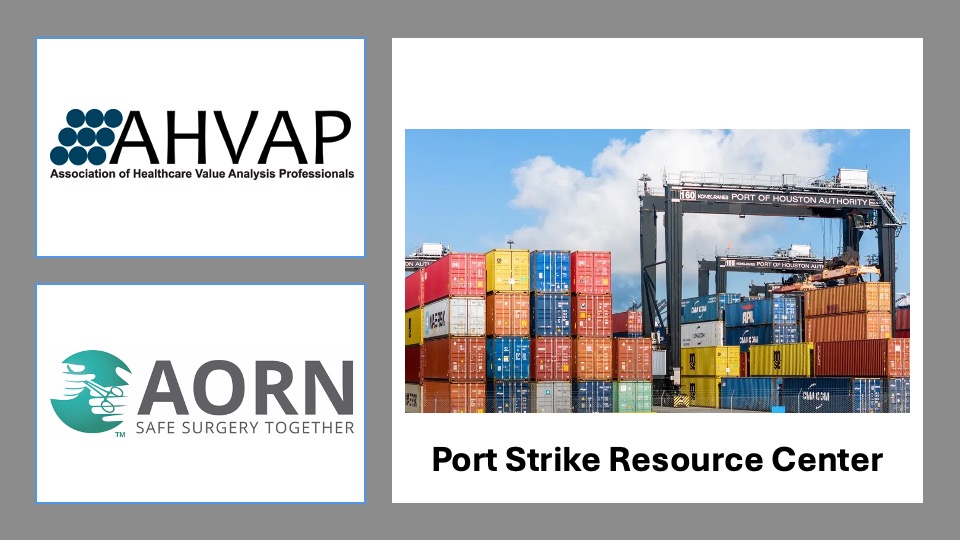Port Worker Strike Resource Center
This Emergency Resource Center is being brought to you as part of our ongoing partnership with the Association of Perioperative Registered Nurses (AORN). AHVAP is making this special resource center available to all AORN members and healthcare value analysis professionals/leaders. As many of you are aware, the potential strike by port workers across major shipping ports in the United States is raising serious concerns regarding the availability of essential medical products and medications. The strike could affect 36 ports on the East and Gulf Coasts. This includes six of the nation's 10 busiest ports. Should this strike occur, we expect significant disruptions in the supply chain, particularly for imported goods and raw materials critical to patient care. More than one-in-three containers exported from the U.S. with life-saving medications leave from the Port of Norfolk in Virginia, while nearly 30% of containerized pharmaceutical imports enter the U.S. at the Port of Charleston in South Carolina. The impact of this port worker strike can impact the availability of critical medications utilized for surgery and anesthesia. The healthcare sector, which relies heavily on timely deliveries of surgical instruments, medical devices, personal protective equipment (PPE), and pharmaceuticals, could face severe shortages in the coming weeks. These disruptions will likely have direct consequences for our perioperative teams, increasing the risk of delayed surgeries, treatment interruptions, and shortages of critical supplies. Anticipated Impacts:
What We Can Do: In preparation for potential shortages, it is essential that we take proactive measures to mitigate the impact on patient care and organizational operations. We recommend the following immediate actions:
Looking Ahead We recognize that the uncertainty surrounding the potential port worker strike can create anxiety for healthcare providers and administrators alike. However, by taking early, coordinated steps to prepare, we can mitigate the effects of supply chain disruptions and continue providing high-quality, timely care to our patients. We encourage each of you to engage your teams in discussions around contingency planning and to communicate regularly with your supply chain and procurement departments as we monitor the situation closely. Food and Drug Administration Resources: Drug Shortage List: ACCESS HERE Medical Devices Shortage List: ACCESS HERE
Additional Suggested Resources for Clinical Practice: AHVAP Position Statements: ACCESS HERE AORN Guidelines for Perioperative Practice: ACCESS HERE Healthcare Ready Worksheet 1: Quick EP Checklist Healthcare Ready Worksheet 2: Collaborative Procurement Healthcare Ready Critical Supplies Guide
|


